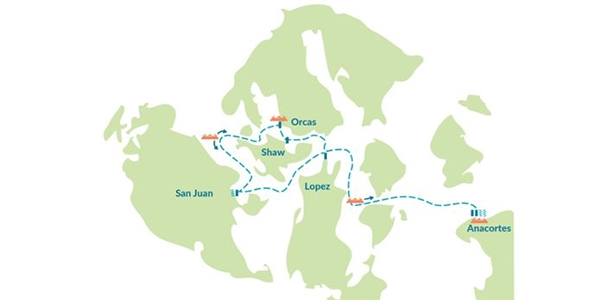A Search and Rescue (SAR) team from Naval Air Station (NAS) Whidbey Island rescued a 24-year-old hiker in the Olympic National Park early Friday morning, Aug. 4, 2017.
NAS Whidbey Island received notification from the Air Force Rescue Coordination Center (AFRCC) about the injured hiker late Thursday night. The AFRCC indicated the man potentially suffered broken back and other injuries he suffered from a fall at an elevation of approximately 4,500 ft. just south of Port Angeles.
NAS Whidbey’s SAR unit departed from the base just at 11:45 p.m. and reached the location area shortly after midnight. Olympic Mountain Rescue (OMR) personnel were on scene and guided the helicopter crew to the injured man’s location using flashlights.
According to Lt. Andrew Boyle, the SAR mission commander, the survivor’s location was by a vertical steep face blanked by extremely tall trees, making insertion of the rescue crew very difficult. The difficulty of the situation was compounded due to a thick haze that made visibility difficult.
After the Navy personnel were successfully inserted to the scene they had to move the injured hiker via litter to a more suitable location as [it] was very rugged and steep. Once the crew got the man aboard they flew him to Harborview Medical Center, arriving around 2 a.m.
Boyle said the mission proved challenging, particularly the rugged terrain and environmental conditions making visibility difficult. “Our communication as a crew was the greatest asset we had,” Boyle said. Throughout each phase of the mission we met each challenge and discussed as a crew the best and safest way to accomplish the task at hand.”
This was the 27th rescue of 2017 for NAS Whidbey Island SAR, which has also conducted five searches and 14 Medical Evacuation (MEDEVAC) missions this year, totaling 52 lives delivered to a higher level of care.
The Navy SAR unit operates three MH-60S helicopters from NAS Whidbey Island as search and rescue/medical evacuation (SAR/MEDEVAC) platforms for the EA-18G aircraft as well as other squadrons and personnel assigned to the installation. Pursuant to the National SAR Plan of the United States, the unit may also be used for civil SAR/MEDEVAC needs to the fullest extent practicable on a non-interference basis with primary military duties according to applicable national directives, plans, guidelines and agreements; specifically, the unit may launch in response to tasking by the AFRCC (based on a Washington State Memorandum of Understanding) for inland missions, and/or tasking by the United States Coast Guard for all other aeronautical and maritime regions, when other assets are unavailable.
**If you are reading theOrcasonian for free, thank your fellow islanders. If you would like to support theOrcasonian CLICK HERE to set your modestly-priced, voluntary subscription. Otherwise, no worries; we’re happy to share with you.**







Who pays for all these rescues? Just askin….